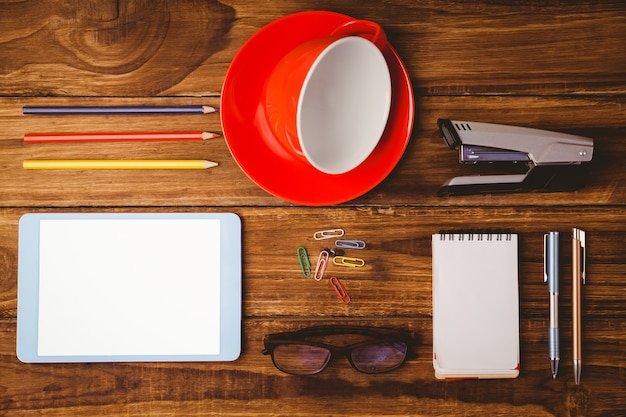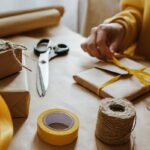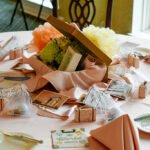
DIY projects are an exciting way to tap into your creativity, learn new skills, and add a personal touch to your home. However, sometimes, a seemingly simple task can turn into a frustrating experience if you don’t have the right tools or tricks at your disposal. That’s where these clever DIY tips and tricks come in! Whether you’re a beginner or a seasoned DIYer, these tips will make your projects smoother, faster, and more enjoyable. Let’s dive into the top 10 DIY hacks you need to know!
1. Use Painter’s Tape for Neat Lines
One of the most frustrating parts of painting or crafting can be getting clean, straight lines. Fortunately, painter’s tape can work wonders! When painting a wall, baseboard, or any other surface, apply painter’s tape along the edges to create a crisp, clean line. Make sure to press the tape firmly into the surface to prevent any paint from seeping underneath. Once you’re done, peel the tape away while the paint is still slightly damp for a perfectly neat finish.
Pro Tip:
If you want to avoid the tape peeling off the paint, remove the tape slowly and at a 45-degree angle.
2. Organize Your Tools with Pegboards
Keeping your tools organized is a game-changer when it comes to DIY projects. A cluttered workspace can slow you down and make your projects feel more stressful. Enter the pegboard! Installing a pegboard on the wall gives you a versatile storage solution for all your tools, from hammers and screwdrivers to scissors and measuring tapes. You can customize the placement of the hooks to fit your needs and ensure that your tools are always within reach.
Pro Tip:
Use colored tape or labels to organize your tools even further. This will help you quickly find exactly what you need, saving time and energy.
3. Use Toothpicks to Fix Small Dents in Wood
Wooden furniture can easily accumulate small dings and dents over time, but don’t worry! You don’t have to replace the entire piece to fix it. A simple trick is to use toothpicks to fill in minor dents. Simply dip the toothpick in wood glue and insert it into the dent, breaking it off flush with the surface. Once the glue dries, sand the area smooth, and the dent will be gone!
Pro Tip:
If you want to make the repair less noticeable, use a wood stain or marker to match the color of the surrounding wood after sanding.
4. Repurpose Old T-Shirts into Cleaning Rags
Instead of tossing out old t-shirts or worn-out clothes, turn them into reusable cleaning rags. T-shirt fabric is soft, absorbent, and perfect for wiping down surfaces, dusting, or even cleaning up spills. Simply cut the fabric into squares and store them in a container. This not only reduces waste but also helps you save money on disposable cleaning products.
Pro Tip:
For extra absorbency, try using old towels or microfiber cloths instead of t-shirts. These materials are especially effective for heavy-duty cleaning tasks.
5. Create Custom Stamps with Everyday Objects
If you love stamping and adding personal touches to your crafts, but don’t want to spend a lot of money on pre-made stamps, consider making your own! Everyday objects like potatoes, erasers, or corks can easily be turned into custom stamps. Simply carve a design into the object, dip it in ink or paint, and stamp it onto your project. You can create unique patterns and designs that reflect your personal style.
Pro Tip:
For more intricate designs, use a craft knife to carve finer details into the stamp. Practice on scrap paper before using it on your final project.
6. Use a Rubber Band to Remove a Stripped Screw
Have you ever tried to remove a screw, only to find the head is stripped and your screwdriver just keeps slipping? A simple solution is to use a rubber band! Place a thick rubber band over the stripped screw head and press your screwdriver into it. The rubber band will provide extra grip, allowing you to unscrew the stubborn screw more easily.
Pro Tip:
If the screw is still stuck, try using needle-nose pliers to grip the edges of the screw and turn it out manually.
7. Prevent Paintbrushes from Drying Out
If you’re in the middle of a painting project but need to take a break, don’t let your paintbrushes dry out! To keep your brushes moist, wrap them in a damp paper towel and place them in a plastic bag. You can even put them in the fridge for longer breaks. This trick works especially well if you’re switching between different colors and don’t want to keep rinsing your brushes.
Pro Tip:
If you’ve accidentally left your brushes to dry out, soak them in warm soapy water for a few hours to help restore the bristles.
8. Use a Nail to Create a Perfect Hole for Nails and Screws
When you’re hanging a picture, shelf, or other decor, it’s easy to make an inaccurate hole for your nails or screws. To fix this, use a small nail or a tack to create a tiny pilot hole where you want to insert the nail or screw. This will guide the nail or screw in place, helping you achieve better accuracy and avoid damaging the wall.
Pro Tip:
For extra stability, use a level before marking where the hole will go to ensure that everything hangs straight.
9. Repurpose Jar Lids as Drawer Pulls
If you’ve ever wanted to give your drawers a unique touch without breaking the bank, consider repurposing jar lids as drawer pulls. These lids can add an eclectic and rustic vibe to your furniture, and they’re often the perfect size for drawer pulls. Simply attach the lid to the drawer using screws, and voilà – you’ve got a quirky and functional handle!
Pro Tip:
Paint or decorate the jar lids to match your furniture style. You can use metallic spray paint for a sleek, modern look, or even add some fun patterns with washi tape.
10. Create Your Own Homemade Chalkboard
Chalkboards aren’t just for classrooms – they’re also a great way to add a personal touch to your home or office. Making your own chalkboard is easier than you think. Start with a wooden board or old picture frame and paint it with chalkboard paint. Let the paint dry completely before using it to write messages, reminders, or even create artwork.
Pro Tip:
If you want a smoother finish, lightly sand the surface before applying the chalkboard paint. This will help you avoid a rough texture.
Final Thoughts
These 10 DIY tips and tricks are sure to make your projects faster, easier, and more enjoyable. Whether you’re painting, building, organizing, or repurposing, there’s a clever hack to make the job go smoother. Don’t be afraid to experiment with different tools, materials, and techniques – creativity is at the heart of every DIY project.
Remember, the key to successful DIY is not just about having the right tools and materials, but also embracing the process and having fun along the way. Happy crafting!








